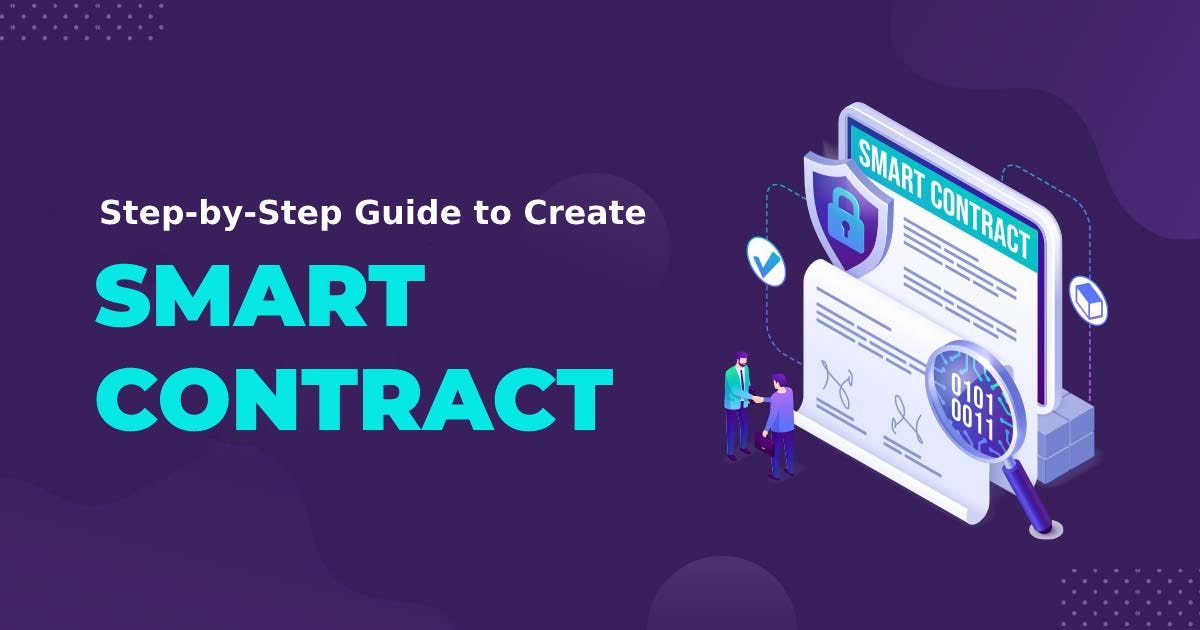Develop your capabilities with blockchain knowledge! Our complete step-by-step guide walks you through smart contract creation, from requirements definition to deployment.
Want to build a powerful DApp? Master smart contracts, the building blocks of trustless contracts on the blockchain. This guide takes you from enthusiast to creator and walks you through every step of the way. Steps to write your own smart contract.
Introduction to smart contracts
Imagine a contract that executes on its own! Smart contracts are digital contracts written in code and stored on a secure blockchain network. This ensures transparency, security, and tamper-proof implementation. Isn't that really cool? Let’s take a closer look and see how it works.
Step 1: Define Requirements
The first step in writing a smart contract is to clearly define the requirements and goals of the contract. Determine the parties involved, the terms of the contract, and the actions or events that trigger the execution of the contract. We conduct thorough research and gather all necessary information to ensure clarity and completeness.
Step 2: Choose a blockchain platform
Next, choose a blockchain platform suitable for deploying your smart contracts. Popular choices include Ethereum, Binance Smart Chain, and Tron, each offering unique features and functionality. When choosing the blockchain platform that best suits your project needs, consider factors such as network scalability, transaction costs, and community support.
Step 3: Set up your development environment
After choosing a blockchain platform, set up your development environment with the necessary tools and resources. Install an integrated development environment (IDE) such as Remix or Visual Studio Code and become familiar with the programming languages and frameworks supported by your chosen blockchain platform (e.g. Solidity for Ethereum).
Step 4: Write smart contract code
Now it's time to write the code for the smart contract. Using your programming language of choice (e.g. Solidity), define the contract structure, functions, and variables according to the requirements defined in step 1. Integrity and robustness of smart contracts by paying close attention to security best practices such as input validation and preventing re-entrancy attacks.
Step 5: Compile the smart contract
Once your smart contract code is written, compile it using the compiler appropriate for your chosen blockchain platform. Most blockchain platforms Built-in compiler or development It is a tool that compiles smart contract code into bytecode and deploys it on the blockchain network.
Step 6: Test your smart contract
It is important to thoroughly test smart contracts in a controlled environment before deploying them on the mainnet. Use a testing framework like Truffle or Ganache to simulate blockchain interactions and verify the functionality, correctness, and security of your smart contract code. Write comprehensive unit tests that cover all aspects of contract behavior and edge cases.
Step 7: Deploy smart contract
Once the smart contract has been successfully tested, it is now time to deploy it on the blockchain network. Deploy your smart contract to testnet or mainnet using the deployment tool or service provided by your blockchain platform. Specify deployment parameters, including gas limits and transaction fees, and confirm deployment transactions.
Step 8: Interact with the smart contract
Once a smart contract is deployed, it can now be interacted with using blockchain transactions. You use the wallet software or the web3.js library to send transactions to smart contracts, call their functions, and update their state. Test different scenarios and edge cases to ensure your smart contract performs as expected under a variety of conditions.
Step 9: Monitor and maintain smart contracts
After deploying a smart contract, it is important to regularly monitor its performance and security. Use blockchain explorers and monitoring tools to track contract activity, detect anomalies, and respond immediately to any issues. Implement upgradability and error handling mechanisms to facilitate future updates and maintenance of smart contracts.
Step 10: Document and Audit Smart Contracts
Finally, document the smart contract code, its functionality, and usage instructions for future reference. We recommend that you perform a third-party security audit to identify potential vulnerabilities and ensure compliance with best practices and industry standards. Document audit results and resolve any issues identified before deploying smart contracts into production.
conclusion
Writing smart contracts is a rewarding journey that requires careful planning, attention to detail, and adherence to best practices. Following this step-by-step guide will help you confidently embark on your smart contract development journey and unlock the transformative potential of blockchain technology and decentralized applications.

